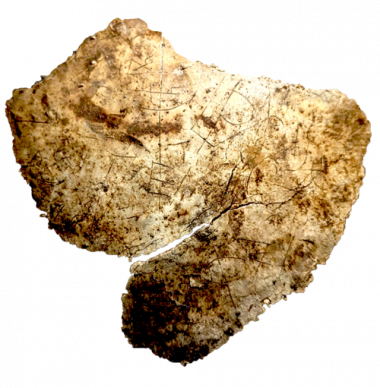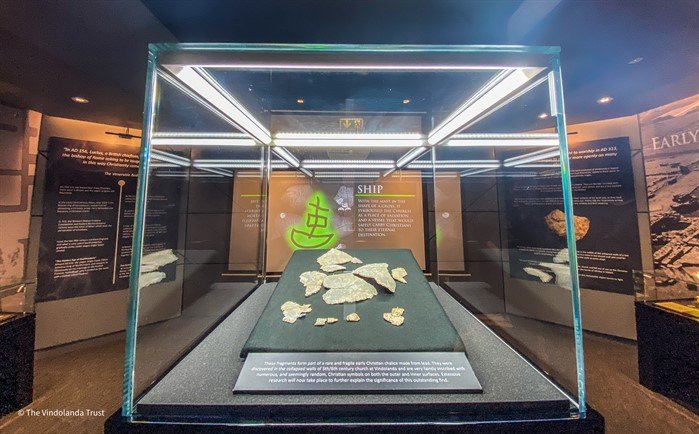'Unique' Christian artefact uncovered at Hadrian's Wall

A "unique" discovery at Hadrian's Wall is offering a tantalising glimpse into early Christianity in Britain.
Archaeologists found "incredibly rare" fragments of a chalice buried in the rubble of a former 6th century church at Vindolanda, a ruined Roman fort that lies just south of the UNESCO World Heritage Site.
The 14 fragments date back to the 5th and 6th centuries, and form the only surviving partial chalice from this period in Britain.
The find is in "very poor condition" as a result of being close to the surface of the ground. Despite this, the Vindolanda Trust said the etchings on the surface of the fragments make the chalice "one of the most important of its type to come from early Christianity in Western Europe".
It is also the only artefact of its kind to be found in a fort on Hadrian's Wall.
The fragments are etched with symbols, each of them representing "different forms of Christian iconography from the time".
Although the symbols have faded with time, making them hard to see with the naked eye, they have been brought to light by specialist photography.
They include well known symbols from the early church, including ships, crosses, the Chi Rho christogram, fish, a whale, "a happy bishop" and angels.
The marks can be found on the outside and inside of the cup, and appear to have been added by the same artist.

The chalice forms the centrepiece of a new exhibition at the Vindolanda Museum highlighting Christianity and the last periods of occupation at the fort.
Ongoing academic analysis of the artefact is being overseen by post-Roman specialist Dr David Petts, of Durham University.
"This is a really exciting find from a poorly understood period in the history of Britain," he said.
"Its apparent connections with the early Christian church are incredibly important, and this curious vessel is unique in a British context.

"It is clear that further work on this discovery will tell us much about the development of early Christianity in beginning of the medieval period."
Vindolanda was a Roman fort housing infintry and cavalry, and was in occupation from around 85 AD to 370 AD.
Vindolanda's Director of Excavations and CEO, Andrew Birley, said: "We are used to 'firsts' and the 'wow factor' from our impressive Roman remains at Vindolanda, with artefacts such as the ink tablets, boxing gloves, boots and shoes, but to have an object like the chalice survive into the post-Roman landscape is just as significant.
"Its discovery helps us appreciate how the site of Vindolanda and its community survived beyond the fall of Rome and yet remained connected to a spiritual successor in the form of Christianity which in many ways was just as wide reaching and transformative as what had come before it.
"I am delighted that we can now start to share our news about this discovery and shed some light on an often-overlooked period of our heritage and past."











